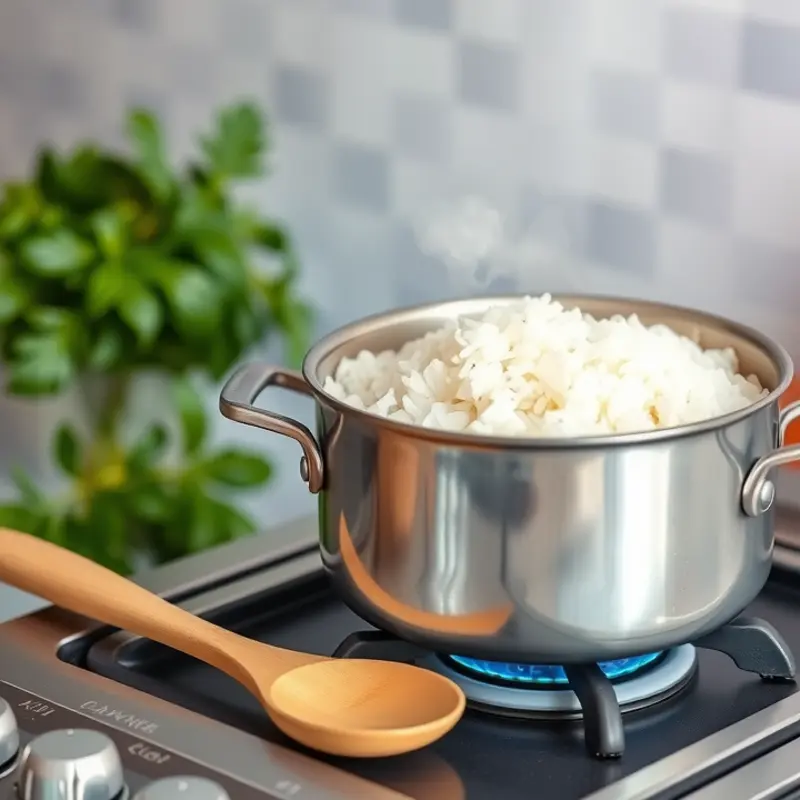Cooking rice perfectly is a skill every home cook should master. Whether you’re preparing a delicious stir-fry or a comforting risotto, getting your rice to the right texture without it sticking together can elevate your dish significantly. This guide will provide you with practical tips and techniques that will help you achieve fluffy rice every time, regardless of your experience in the kitchen.
Understanding Rice Varieties for Optimal Cooking

Different types of rice can significantly influence the texture and stickiness of the final cooked dish. By understanding the unique qualities of common rice varieties, you can select the best one for your culinary needs, ensuring perfectly cooked rice every time. Though there are numerous kinds of rice globally, we’ll focus here on long-grain, medium-grain, and short-grain rice.
Long-Grain Rice is known for its slender shape and length, typically three to four times its width. When cooked, the grains remain separate and fluffy, primarily due to their lower starch content. This variety is ideal for pilafs, salads, and as a side dish where you want distinct grains. To cook long-grain rice effectively, rinse it under cold running water until the water runs clear. This process helps remove excess surface starch, reducing the chance of clumping. Once rinsed, simmer gently in water using a 2:1 water-to-rice ratio. Cover and allow it to cook undisturbed for around 18 minutes.
Medium-Grain Rice has a shorter, plumper shape compared to long-grain rice. It tends to be more tender and versatile, absorbing flavors well, making it perfect for dishes like risottos, paellas, and sushi. When cooked, medium-grain rice becomes moist and slightly clumpy, offering a creamier texture. Achieve optimal results by using a 1.5 cups of water to 1 cup of rice ratio. A crucial tip for avoiding stickiness is to allow it to rest covered for a few minutes after cooking, helping the grains firm up.
Short-Grain Rice is often referred to as sticky rice due to its high starch content. The grains are almost round and become quite soft and sticky when cooked. It’s a staple in many Asian cuisines, especially in sushi, mochi, and rice puddings. Cooking short-grain rice involves using less water than other types due to its moisture retention capability. For every cup of rice, add 1.25 cups of water. Rinse thoroughly before cooking to eliminate some of the surface starch that leads to excessive stickiness.
Understanding these distinctions expands your cooking capabilities and allows you to tailor the rice texture to your dish’s requirements. Moreover, being mindful of how you store your rice can also contribute to optimal results. If interested, you can explore more ways of eco-smart kitchen storage here. Consider this vital knowledge next time you set out to prepare the perfect rice dish, and enjoy the satisfying results as the grains cook just the way you want them.
Techniques for Cooking Rice Without Sticking

Cooking rice that is fluffy and non-sticky is not only about choosing the right rice variety but also mastering the technique involved. One of the first steps in achieving this is by thoroughly rinsing the rice before cooking. Rinsing removes excess starch, which is often the culprit behind clumpy and sticky rice. Place your rice in a fine mesh strainer and rinse under cold water until the water runs clear. This simple step can dramatically improve the texture of your final dish.
Next, let’s discuss the importance of using the right water-to-rice ratio. The general rule of thumb is two parts water to one part rice. However, this can vary slightly depending on the type of rice. For example, jasmine and basmati rice may require a little less water to achieve the perfect texture. It’s also essential to keep in mind that some rice varieties absorb water differently, so slight adjustments may be necessary based on your personal experience.
Temperature and timing are equally crucial. When cooking on the stovetop, bring the water and rice to a boil, then immediately lower the heat to a simmer and cover with a tightly fitting lid. Cook until the water is absorbed and the rice is tender, which typically takes around 15-20 minutes. Be sure not to lift the lid frequently as this disrupts the steaming process.
Using a rice cooker simplifies the process significantly and often produces excellent results. Simply add the rinsed rice and appropriate amount of water to the rice cooker, set the cooking function, and wait. The rice cooker uses sensors to determine when the rice has absorbed the right amount of water and automatically switches to a warming function.
Once the rice is cooked, it’s time to fluff. Use a fork to gently stir and separate the grains. This step aerates the rice and releases any remaining steam, preventing more sticking. Avoid using a spoon, which can crush the grains and lead to clumping.
For more tips and ideas on how to manage your kitchen efficiently, check out the eco-smart kitchen storage article.
With these techniques, your rice will be perfectly non-sticky every time, ready to complement any meal you choose to serve.
Final words
Cooking rice without it sticking is an essential skill that enhances your culinary repertoire. By understanding the different rice varieties and employing effective cooking techniques, you can produce perfectly cooked rice every time. Remember to rinse your rice, use the appropriate water-to-rice ratio, and allow it to rest before serving. With practice, you’ll soon be serving up fluffy, delicious rice that complements any meal. Happy cooking!







